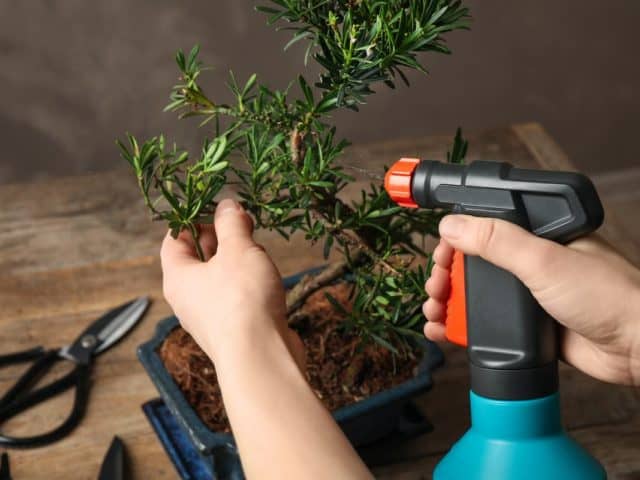If you’ve dived into the captivating world of bonsai cultivation, you’re probably buzzing with questions about the best practices to ensure your miniature tree thrives. One burning question might be about the right moment to start manipulating those tiny branches.
Well, you’re in luck! A whopping 85% of bonsai aficionados agree that getting an early start on this is crucial for sculpting your bonsai’s future look. But hey, when is ‘early’ really early?
Remember, every bonsai journey is unique, and so is yours. Embrace the learning curve, and don’t be afraid to experiment. After all, the most beautiful bonsai trees are the result of dedication, love, and a touch of creativity. Happy wiring!

Key Takeaways
- Wiring bonsai trees should start at a young age for flexibility and foundation.
- Deciduous trees are wired before new growth lignifies in late winter or early spring.
- Young saplings offer flexibility for shaping with wiring to establish form.
- Proper timing for wiring nursery stock trees influences growth and aesthetic appeal.
Optimal Timing for Wiring Bonsai Trees
Before you begin wiring your bonsai trees, it’s crucial to understand the optimal timing for this practice to ensure the health and vigor of your plants.
For deciduous trees, it’s best to wire them before new growth lignifies, typically in late winter or early spring. During this period, the branches are more pliable, allowing you to shape them with greater ease. Remember to remove the wire before it cuts into the bark as the tree grows.
Applying wire during the growing season can help guide the growth of your Bonsai Tree, but be cautious when working with specific tree species. By following these guidelines and timing your wiring correctly, you can enhance the beauty and form of your bonsai while keeping them healthy.
Wiring Bonsai Saplings Grown From Seed
To wire bonsai saplings grown from seed effectively, it’s crucial to wait until they’ve developed for at least 3 years to ensure their trunks and branches are ready for shaping.
Young saplings offer flexible trunks that allow for dramatic wire movement, aiding in safer and more pronounced shaping. Wiring these bonsai trees at a young age establishes a solid foundation for their future growth and aesthetic appeal.
Bonsai seed kits typically require 2 years for root and trunk development before wiring should commence. By starting the wiring process at the appropriate time, you set the stage for the long-term health and beauty of your bonsai saplings, ensuring they develop into stunning miniature masterpieces.
Wiring Nursery Stock Trees as Bonsai
After allowing your nursery stock trees to recover for 1-1.5 years post-purchase, it’s time to consider wiring them as bonsai to shape and enhance their aesthetic appeal.
When starting to wire young nursery stock trees, you have the opportunity to influence their growth and create beautiful bonsai trees. Wiring allows for precise control over the tree’s branches, positioning, and overall style.
It’s crucial to carefully consider the tree’s root system and recovery period before beginning the wiring process.
Styling Bonsai Trees Collected From the Wild
Styling wild-collected bonsai trees necessitates a patient approach to allow for proper acclimation and root system establishment before initiating any shaping techniques. After at least a year of acclimation post-collection, you can start assessing the tree’s health for styling.
It’s advisable to avoid cutting or wiring during the initial recovery phase to minimize the risk of stressing the tree. Once the bonsai tree shows signs of strong growth and a well-established root system, you can begin gentle wiring to guide the branches and trunk into the desired shape.
Be cautious with delicate species, as they may need even more time to recover before any shaping interventions. Remember, taking time to let the tree adapt will reduce the risk of setbacks in its development.
Benefits of Wiring Bonsai Trees at a Young Age
When wiring young bonsai trees, take advantage of their flexibility and supple trunks to safely and effectively shape them for future growth and beauty. Young trees offer a prime opportunity for early wiring, as their supple trunks can be molded into desired shapes with ease. By initiating wiring at a young age, you establish a solid foundation for the bonsai’s development, ensuring it grows in a visually pleasing manner.
Additionally, young trees exhibit high adaptability to wiring techniques, allowing for intricate and aesthetically pleasing designs. Proper wiring not only shapes the tree but also optimizes sunlight exposure, promoting healthy growth.
Embrace the benefits of wiring young bonsai trees to create stunning and well-formed specimens.






